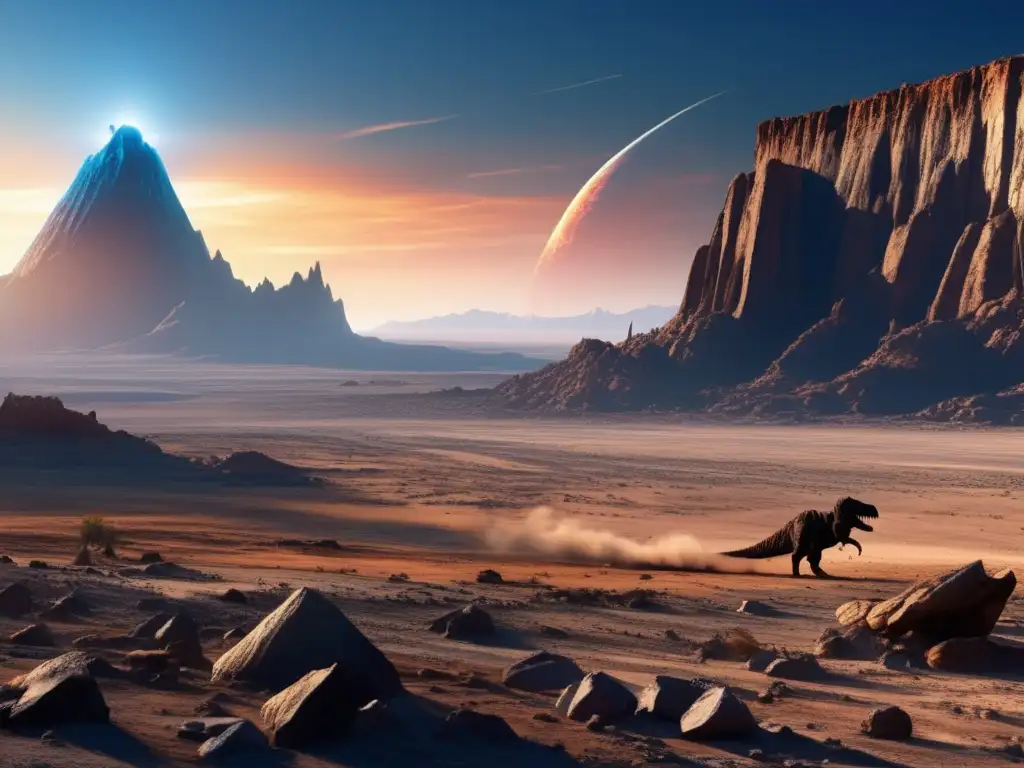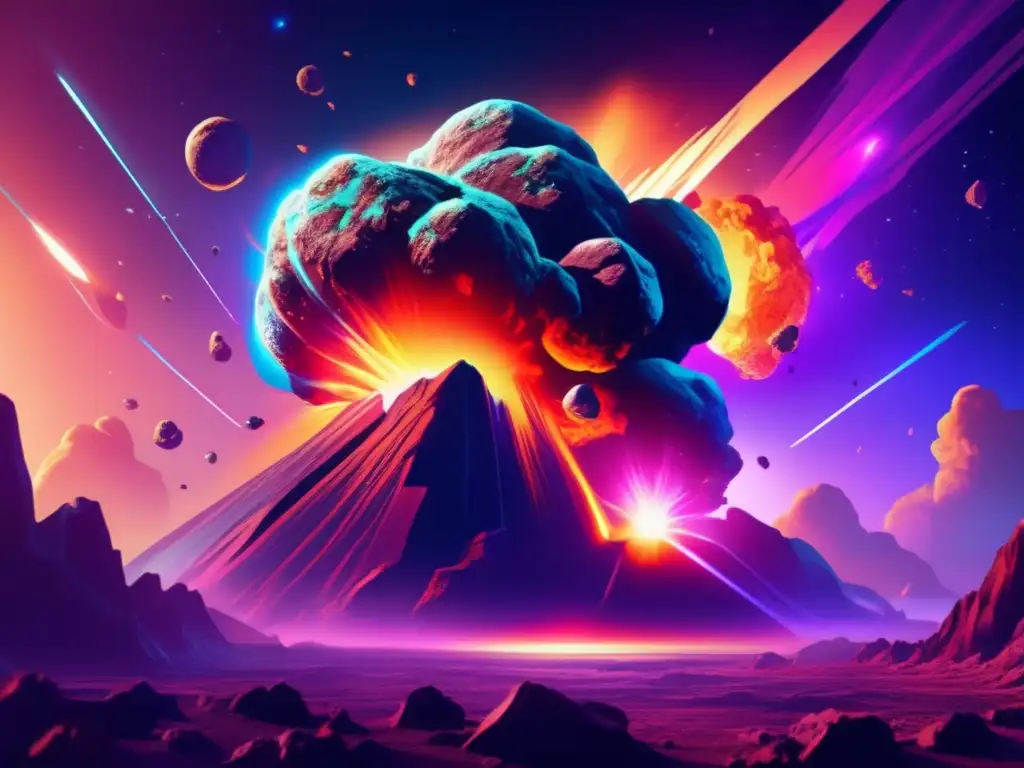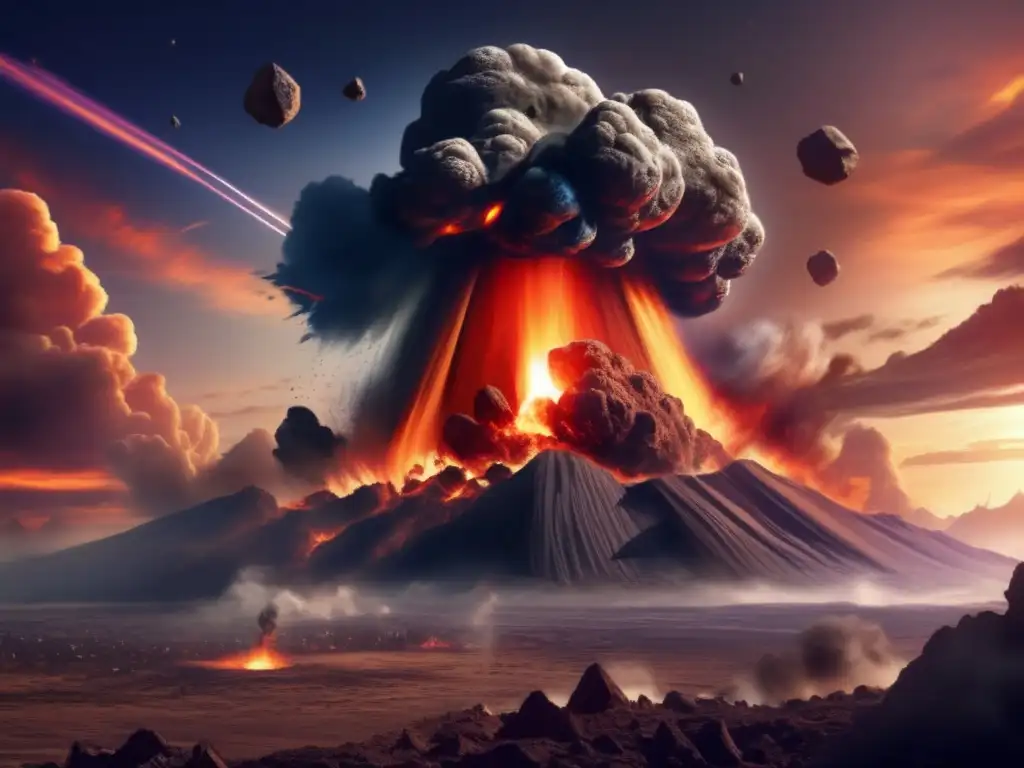Fire From The Sky: The Impact Winter And Dinosaur Extinction

Introduction
The most famous asteroid impact in history occurred 66 million years ago, when an object believed to be between 10 and 15 kilometers in diameter collided with the Earth. The impact created a massive explosion and sent massive amounts of debris into the atmosphere. This event is widely believed to have caused the extinction of the dinosaurs, along with numerous other species.
The Effect of the Impact

The Explosion
The impact of the asteroid is believed to have created an explosion with the force of 100 million tons of TNT. The energy released by the impact would have caused earthquakes and tsunamis, as well as creating a massive cloud of dust and debris that would have been visible from space.
The Impact Winter
The massive amount of debris thrown into the atmosphere by the impact would have blocked out the sun, causing a phenomenon called "impact winter." The lack of light and heat would have caused global temperatures to drop, leading to crop failures and widespread ecological collapse.
The Extinction Event
The combination of the explosion, earthquakes, tsunamis, and impact winter would have had a devastating effect on the planet's biosphere. Many species would have been unable to adapt to the new conditions, leading to widespread extinction. It has been estimated that more than 75% of all species on the planet were wiped out in the years following the impact.
The Evidence for an Asteroid Impact

The Chicxulub Crater
In the 1980s, geologists discovered a massive crater buried beneath the Yucatan Peninsula in Mexico. The crater, now known as Chicxulub, was dated to around 66 million years ago. The size and location of the crater match what would be expected from an impact event, leading most scientists to conclude that it was caused by the asteroid that wiped out the dinosaurs.
Impact Fallout
Scientists have found a layer of sediment around the world that dates to the time of the impact. This layer contains high levels of iridium, an element that is rare on Earth but commonly found in asteroids. The presence of this layer supports the theory that an asteroid impact was responsible for the extinction event.
Fossil Record
The fossil record shows a sudden and massive die-off of many species at the time of the impact. Dinosaurs, pterosaurs, and marine reptiles all disappeared, along with many species of plants and invertebrates. The timing and severity of this extinction event suggest that it was caused by a sudden catastrophic event like an asteroid impact.
The Aftermath of the Impact

The Recovery
The extinction event caused by the asteroid impact opened up new ecological niches that were quickly filled by surviving species. Mammals, which had previously been relatively small and insignificant compared to the giant reptiles, began to diversify and evolve rapidly. Birds also emerged as a dominant group, taking advantage of the new opportunities created by the extinction event.
The Legacy Today
The asteroid impact that wiped out the dinosaurs had a profound effect on the planet's ecology and biota. The legacy of this event can still be seen in the fossils and geological records of the Earth, and it has inspired generations of scientists to study the origins and evolution of life.
The Importance of Studying Asteroid Impacts
The dinosaur extinction event is just one example of the devastating effects that an asteroid impact can have on the Earth. While such events are rare, they pose a significant threat to life on our planet. Studying asteroid impacts can help us understand how to mitigate or prevent these catastrophic events and prepare for their aftermath.
Frequently Asked Questions

-
What caused the extinction of the dinosaurs?
The most widely accepted theory is that an asteroid impact caused a global extinction event that wiped out the dinosaurs.
-
How did the asteroid impact cause the extinction event?
The impact caused a massive explosion that generated earthquakes, tsunamis, and an "impact winter" that blocked out the sun and caused global temperatures to drop. These conditions led to widespread ecological collapse and the extinction of many species.
-
Is another asteroid impact likely?
While the chance of a large asteroid impact is relatively low, it is still a significant threat to life on Earth. Scientists are studying ways to detect and deflect potentially dangerous asteroids before they collide with our planet.
-
What can we do to prevent an asteroid impact?
One way to prevent an asteroid impact is to detect potentially dangerous objects early and deflect them away from Earth. This can be done using techniques like gravitational tractor beams, kinetic impactors, or nuclear explosions.
-
What can we learn from studying asteroid impacts?
Studying asteroid impacts can help us understand how they affect the Earth's biosphere, geology, and climate. This knowledge can be used to develop strategies for mitigating the effects of future impacts and protecting life on our planet.
Conclusion
The impact of an asteroid 66 million years ago caused a catastrophic extinction event that wiped out the dinosaurs and many other species. The global effects of this impact are still visible in the geological and biological records of the Earth. Studying asteroid impacts is vital to understanding the origins and evolution of life and developing strategies for mitigating the threat of future impacts.
We hope that this article has provided valuable information on the topic and encouraged readers to share their thoughts and participate in the asteroid community at www.asteroidrealm.com.
Additional Resources

- NASA Asteroid Exploration Program
- Impact Effects Calculator
- What Would Happen If an Asteroid Hit Earth?
 Cosmic Catastrophe: The Asteroid That Reshaped Life On Earth
Cosmic Catastrophe: The Asteroid That Reshaped Life On Earth A Blast From The Past: Asteroids And The Dinosaur Demise
A Blast From The Past: Asteroids And The Dinosaur Demise When The Sky Fell: The Asteroid Impact Hypothesis
When The Sky Fell: The Asteroid Impact HypothesisIf you want to discover more articles similar to Fire From The Sky: The Impact Winter And Dinosaur Extinction, you can visit the Asteroids and Dinosaurs category.
Leave a Reply

Articulos relacionados: